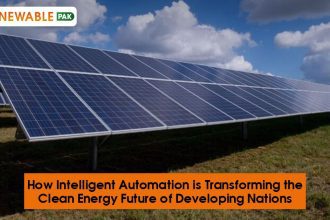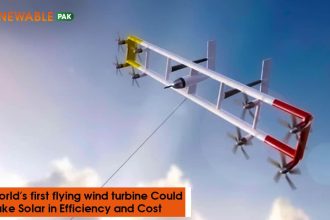Explore how hydrogen-powered engines work, the benefits of zero-emission driving, and why hydrogen could be a major player in the future of clean mobility.
Introduction: The Promise of Hydrogen-Powered Engines
The global push for greener transport is now bringing hydrogen-powered engines into the conversation. EVs may have captured the media’s attention, yet hydrogen technology presents a rival pathway, delivering true zero emissions, rapid refueling, and extended travel distance. The big question is, how do these engines operate, and how do they compare to battery electric vehicles?
In this piece, we’ll dismantle the engineering of hydrogen engines and assess their potential contribution to the shift toward clean mobility.
What Is a Hydrogen-Powered Engine?
A hydrogen-powered engine uses hydrogen gas as fuel to create electricity or directly power an internal combustion engine. There are two main types of hydrogen-powered engines:
- Hydrogen fuel cell electric vehicles (FCEVs): Using hydrogen in a fuel cell to create electricity to power an electric motor.
- Hydrogen internal combustion engines (H2-ICE): Using hydrogen in a modified combustion engine similar to traditional gasoline engines.
- Both types have zero tailpipe emissions, producing only water vapor as hydrogen’s exhaust. However, the fuel cell variant is also vastly superior and is the most widely used.
“Hydrogen is the most abundant element in the universe. When used correctly, hydrogen has the potential to power vehicles and not pollute the planet,” states Dr. Mary Wilkins, a clean energy researcher for the International Renewable Energy Agency (IRENA).
How Do Hydrogen Fuel Cells Work?
A fuel cell stack converts hydrogen gas (H₂) into electricity with an electrochemical reaction in the FCEVs. The fuel cell stack consists of several functional components:
- Hydrogen flows to the anode side of the fuel cell.
- The catalyst separates the hydrogen atoms into protons and electrons.
- The electrons now create a current of electricity through the external circuit, providing energy to the electric motor.
- The protons push through the electrolyte to the cathode side.
- At the cathode, the protons mix with oxygen and protons to create water (H₂O), which is the only byproduct.
- Hydrogen electricity is clean, efficient, and silent.
According to the information provided by Toyota, the Mirai FCEV can travel 402 miles (647 km) on a full hydrogen tank, which is similar to a full gasoline vehicle but with zero emissions.

Hydrogen vs. Electric Cars: What is the difference?
While hydrogen (fuel cell) and battery electric vehicles (BEVs) both intend to get to zero-emission transportation, there are several key differences:
Hydrogen Fuel Cell Electric Vehicles (FCEVs) can typically be refueled in about three to five minutes—much faster than Battery Electric Vehicles (BEVs), which generally take around 30 to 60 minutes at a fast-charging station. This quick refueling time is one of the key advantages of hydrogen-powered vehicles, especially for long-distance travel and fleet use.
When it comes to driving range, FCEVs can usually travel about 300 to 400 miles on a full tank of hydrogen. In contrast, most BEVs offer a range of 150 to 300 miles per charge. However, BEVs are significantly more energy-efficient, operating at approximately 85% to 90% efficiency compared to around 60% for hydrogen-powered vehicles. This efficiency gap makes BEVs more attractive from an energy usage standpoint.
Infrastructure and cost are major differentiators. While electric charging stations are widely available and growing rapidly, hydrogen refueling stations are still limited in number. Additionally, hydrogen vehicles tend to be more expensive than BEVs, though prices are expected to drop as hydrogen technology advances and production scales up.
“Hydrogen could be there to supplement electric vehicles for longer routes and heavier haulage where the use of batteries is less practical,” explained Sebastian Blanco in SlashGear’s breakdown.
The Environmental Case for Hydrogen
Hydrogen fuel cell vehicles produce zero carbon from the tailpipe and only emit water and heat. But it is equally important to consider how the hydrogen is created:
- Gray Hydrogen: Made from fossil fuels, like natural gas, with high carbon.
- Blue Hydrogen: Same, but with carbon-capturing technology
- Green Hydrogen: Made by using renewable electricity (solar/wind) to electrolyze water and create hydrogen, meaning you are truly creating something clean.
As of 2023, only 1% of hydrogen made in the world is green. That said, investment for hydrogen, especially green hydrogen, is rapidly growing. The International Energy Agency (IEA) projects that by 2030, green hydrogen could account for 20-25% of hydrogen production if countries follow through on policy to support clean energy.

Benefits of Hydrogen-Powered Engines
- Quick Refilling: Hydrogen cars can top up their tanks in less than five minutes, matching the convenience of gasoline vehicles.
- Extended Distance: Hydrogen packs more energy into less space, giving these vehicles a longer drive range than most battery electrics, perfect for long-haul routes or fleet delivery.
- Weight Advantage: Hydrogen storage cylinders are lighter than the large battery packs in big electric buses or trucks, helping keep payload capacity higher.
- Water Vapor Only: When green hydrogen is used, the entire process, from production through driving, can be nearly free of greenhouse gases, releasing just water vapor.
Barriers to Widespread Adoption
Even with these perks, a few roadblocks linger:
- Sparse Refueling Network: Current stations are clustered in California and parts of Japan, leaving most of the world without coverage.
- Expensive Green Hydrogen: Making it with renewable energy is still pricier than using natural gas.
- Energy Efficiency Drop: Some energy is lost turning electricity into hydrogen and then back to power, lowering the overall efficiency.
- Vehicle Cost: Low production numbers keep the sticker price higher than most battery electric cars.
“Hydrogen’s trajectory hinges on scaling production, building stations, and consistent policy backing,” says Dr. Lena Krause of CleanTech Global.
Applied Hydrogen Technology
Hydrogen is moving from labs to life:
- City Transit: Tokyo’s fleet is quietly running hydrogen buses; LA has added several to cut emissions.
- Goods Movement: Nikola Motors and Hyundai are running hydrogen-powered prototype trucks on US routes.
- Rail and Sky: Alstom’s hydrogen trains are already whirring through Germany’s regional lines; some airlines are testing hydrogen fuels for future short-haul routes.
Hydrogen’s Global Hubs
- Japan and South Korea: Both nations are pouring billions into cars, buses, and fueling stations.
- European Union: By 2030, Europe plans to make 10 million tons of green hydrogen each year.
- United States: California has the largest station network; the federal Infrastructure Investment and Jobs Act is now boosting hydrogen funding.
The Prospects for Hydrogen-Driven Powertrains
Hydrogen will probably never displace battery electric vehicles, and that’s perfectly fine. It can thrive alongside them, stepping in wherever a heavy battery pack imposes too great a weight or recharging penalty.
With continuing investment from Toyota, Hyundai, and BMW, alongside government incentives in key markets, hydrogen is shifting from pilot projects to serious deployment.
Final Thoughts: A Cohesively Clean Mobility Ecosystem
Hydrogen powertrains advance the ambition for transportation with zero tailpipe emissions. While infrastructure and cost hurdles linger, technology breakthroughs and supportive regulation are accelerating.
From city buses and long-haul trucks to regional trains and on-demand taxis, hydrogen will help knit together a broad, low-carbon transportation grid, one that leverages the planet’s lightest and most plentiful element.
References
Blanco, Sebastian. How Hydrogen-Powered Vehicle Engines Work: Power Explained. SlashGear.
International Energy Agency (IEA). Hydrogen Tracking Report 2023.
Toyota. Toyota Mirai Specifications.
International Renewable Energy Agency (IRENA). Hydrogen: A Renewable Energy Perspective.












